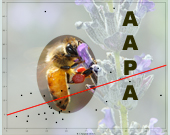Citation: Mullin CA, Frazier M, Frazier JL, Ashcraft S, Simonds R, et al. 2010 High Levels of Miticides and Agrochemicals in North American Apiaries: Implications for Honey Bee Health. PLoS ONE 5(3): e9754. doi:10.1371/journal.pone.0009754
Web Link:www.plosone.org
Brief Description:
Recent declines in honey bees for crop pollination threaten fruit, nut, vegetable and seed production in the United States. A broad survey of pesticide residues was conducted on samples from migratory and other beekeepers across 23 states, one Canadian province and …

